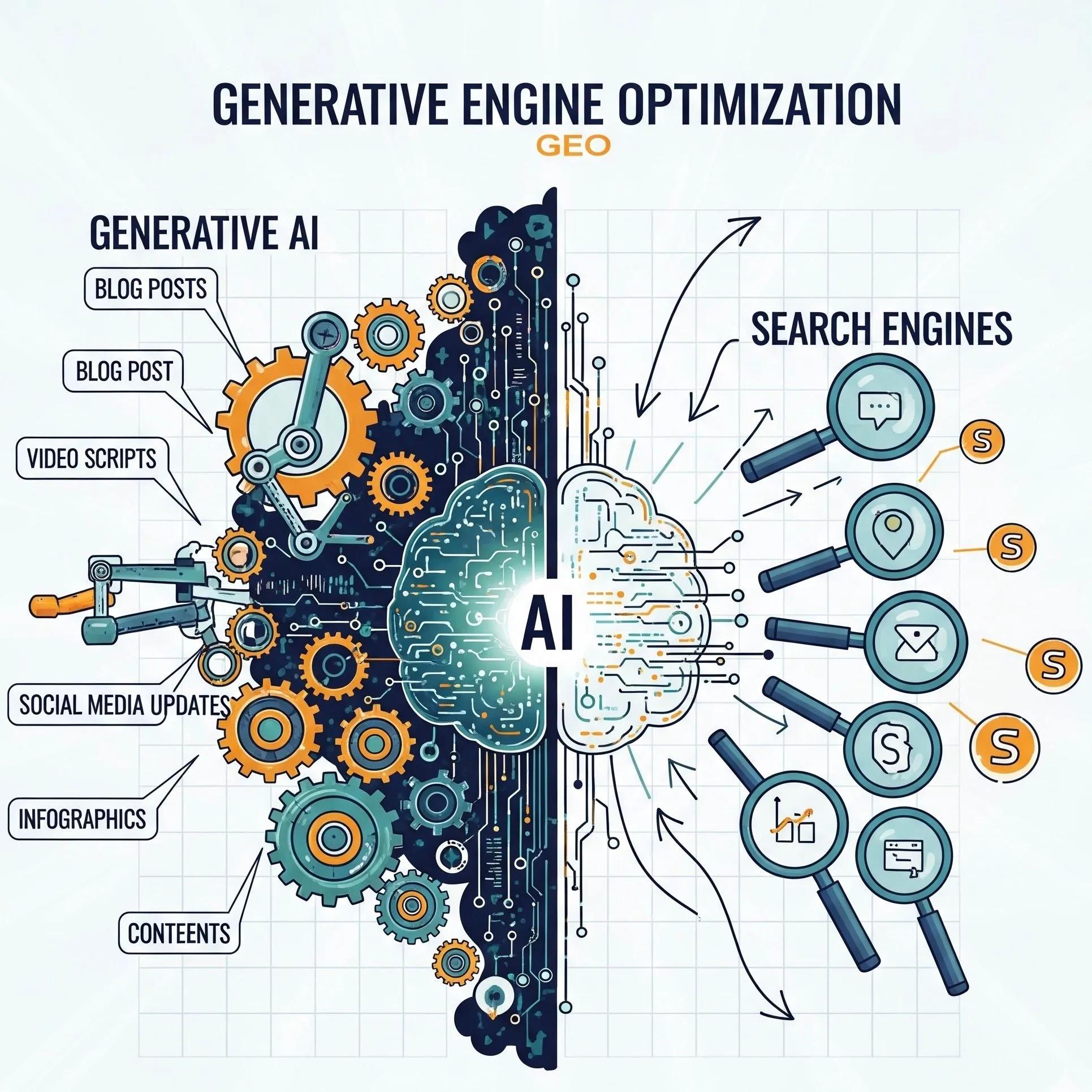Generative Engine Optimization (GEO): Beyond Traditional SEO
Published on 9/7/2025 by NexDevia

In today’s fast-evolving digital landscape, Search Engine Optimization (SEO) is no longer just about ranking higher on Google’s results page. With the rise of AI-driven search engines and generative models, a new concept is taking shape: Generative Engine Optimization (GEO). This approach goes beyond traditional SEO, focusing on how brands and content creators can optimize for AI-powered responses that influence user decisions directly.
What is Generative Engine Optimization (GEO)?
Generative Engine Optimization (GEO) is the practice of optimizing content for AI-driven engines—such as ChatGPT, Gemini, Perplexity, and other generative AI platforms—so that your brand, product, or service is accurately represented in AI-generated answers.
Unlike traditional SEO, which mainly targets Google’s ranking factors (keywords, backlinks, page speed, etc.), GEO is about ensuring your content is structured, trustworthy, and relevant enough to be pulled into AI-generated results.
GEO vs Traditional SEO
AspectTraditional SEOGenerative Engine Optimization (GEO)Primary GoalRank higher on Google search resultsBe included in AI-generated answersFocusKeywords, backlinks, on-page optimizationAuthority, structured data, relevanceAudience BehaviorUsers click on links to read contentUsers get summarized AI responsesContent StyleKeyword-rich articles, blogs, landing pagesFact-based, concise, trustworthy dataToolsGoogle Search Console, SEMrush, AhrefsAI models, knowledge graphs, citations
Why GEO Matters
AI is changing search behavior
Users are increasingly turning to chat-based search assistants instead of traditional search engines.
Direct answers reduce clicks
Generative engines often summarize information, meaning fewer users visit websites directly. GEO ensures your brand is part of that summary.
Trust & authority are crucial
AI models prioritize reliable, verifiable sources. If your content isn’t optimized, you risk being left out of AI-driven recommendations.
Key Strategies for GEO
1. Build Authoritative Content
- Create fact-checked, data-driven content.
- Include statistics, references, and citations.
- Showcase expertise (E-E-A-T: Experience, Expertise, Authority, Trustworthiness).
2. Leverage Structured Data
- Use schema markup for articles, FAQs, products, and reviews.
- Make your content machine-readable to help AI engines extract it accurately.
3. Optimize for Conversational Queries
- Focus on long-tail, natural language questions.
- Example: Instead of “best SEO tools,” write for “What are the best SEO tools for startups in 2025?”
4. Maintain Transparency
- Provide clear author bios, publication dates, and sources.
- Transparency builds trust, which generative engines favor.
5. Diversify Content Formats
- Create blogs, videos, infographics, and podcasts.
- AI models pull from multiple sources, so multi-format content increases visibility.
The Future of GEO
As AI becomes the primary search medium, GEO will become as critical as SEO is today. Businesses that adopt GEO strategies early will gain a competitive edge by ensuring their brand is visible not just on search engines, but in AI-driven conversations.
In the future, the ability to influence AI answers could define digital success. Those who ignore GEO risk becoming invisible in the age of generative search.
Final Thoughts
Generative Engine Optimization (GEO) represents the next evolution of digital visibility. While traditional SEO is still essential, businesses must now adapt their strategies to ensure their content is AI-ready.
By building authoritative, structured, and trustworthy content, you position your brand to thrive in both search engines and generative engines—securing visibility in a world where AI is the new gateway to information.
✅ Pro Tip: Start by auditing your existing content. Ask yourself: If an AI model answered a user’s query today, would my brand be part of the answer? If not, it’s time to adopt GEO strategies now.